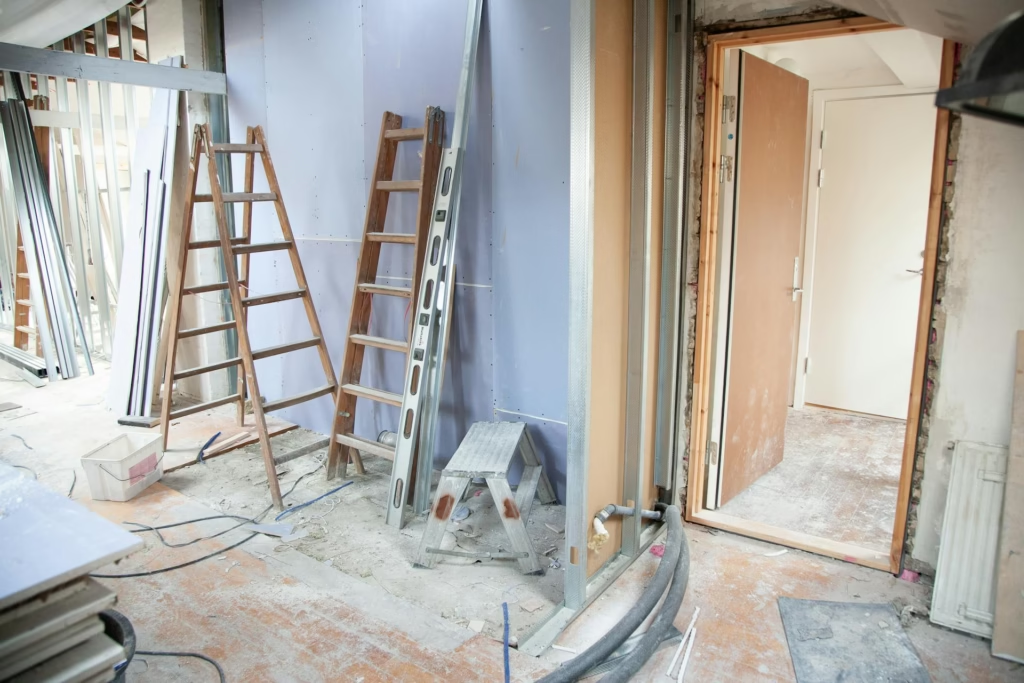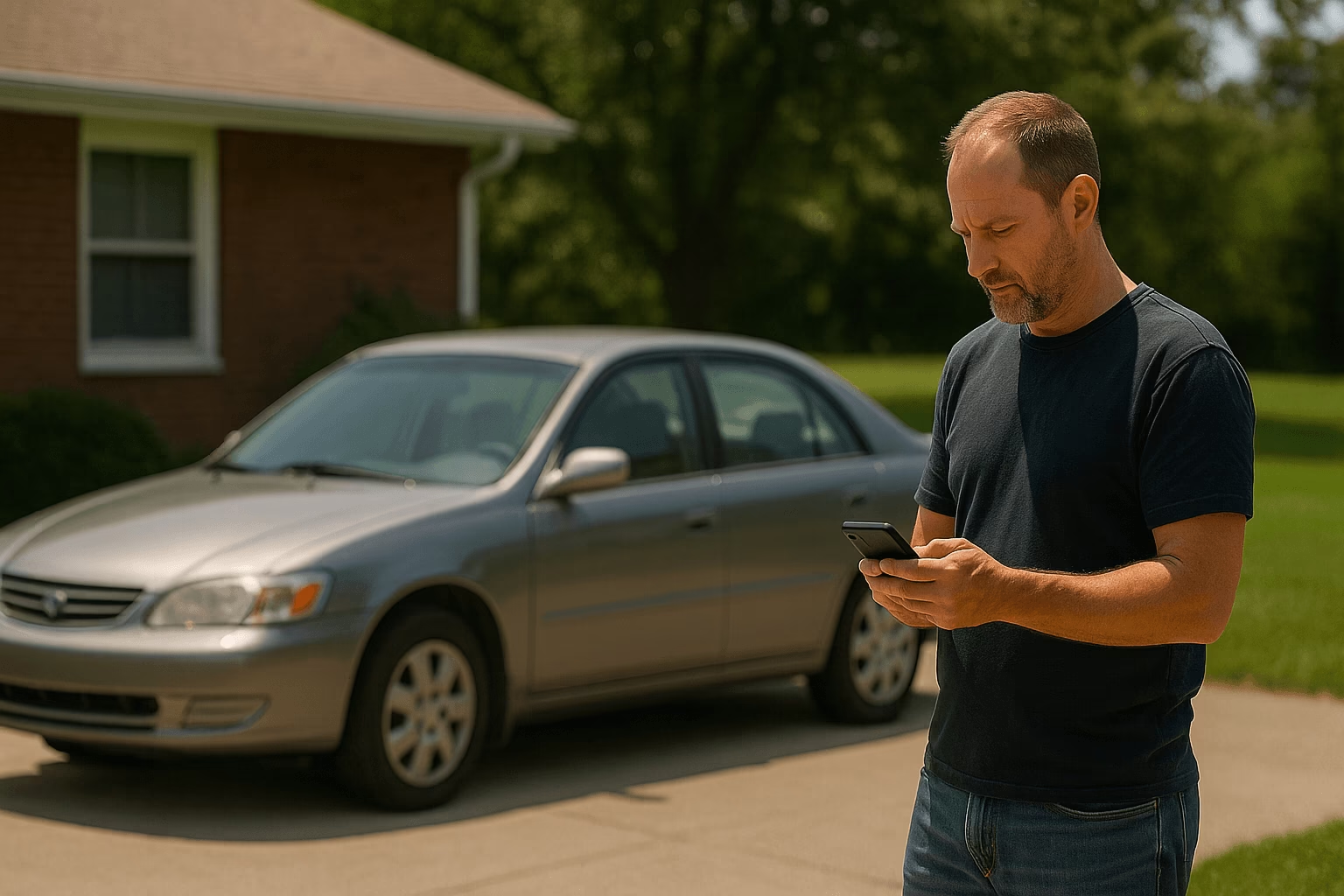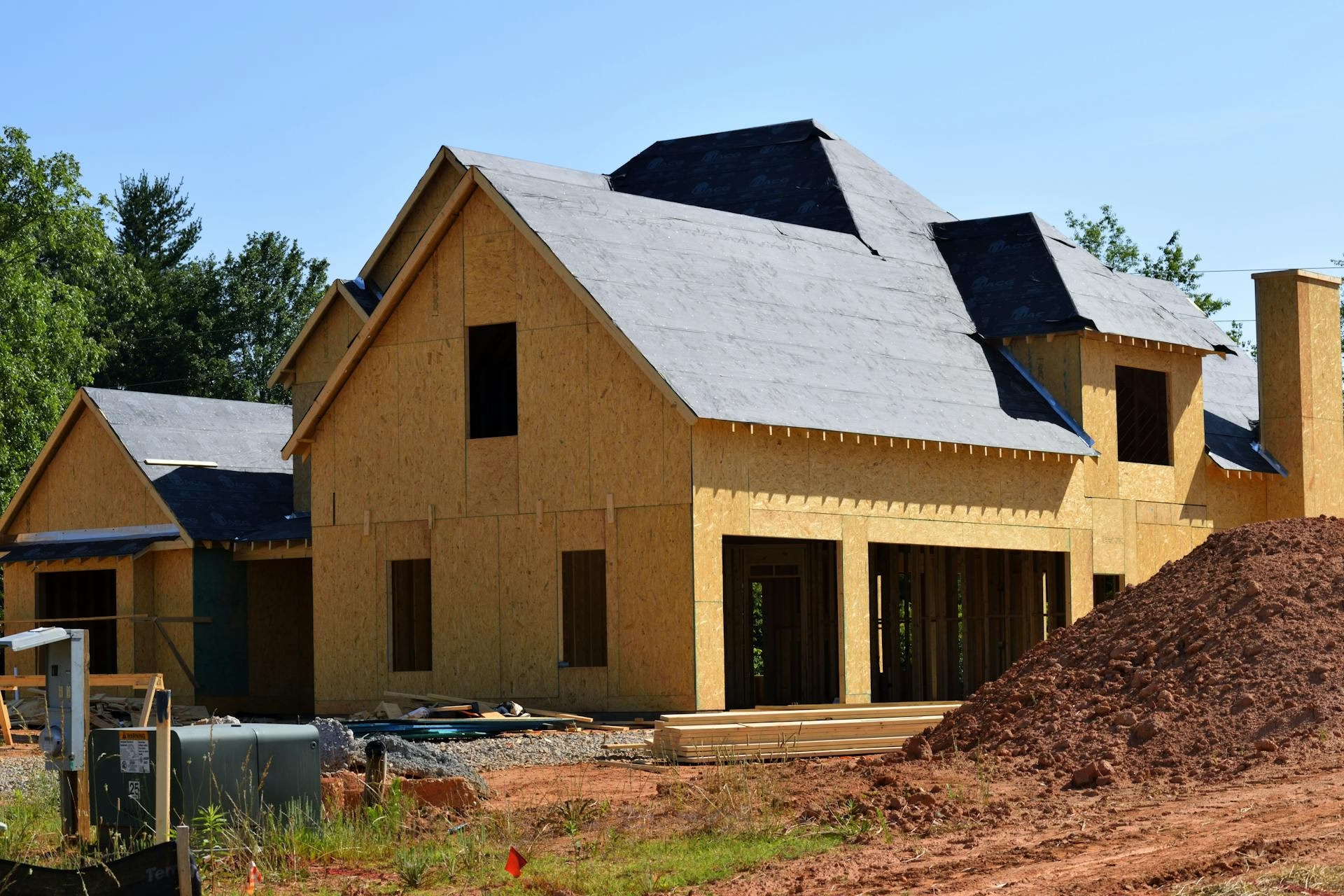Key takeaways
What’s the difference? Market value is what your home could sell for; replacement cost is what it would cost to rebuild with like-kind materials—land excluded.
Why insured value can be higher: Replacement cost can exceed sale price due to labor, materials, debris removal, permits, and code upgrades.
Ohio tip: Review coverage annually; consider extended/guaranteed replacement cost so inflation or demand surges don’t leave gaps.
Next step: Request a replacement-cost review and options for extended RC.
1) Why this matters right now
Buying a home is a huge milestone. But here’s the surprise that trips up many first-time buyers (and even seasoned pros): the price you pay for the house (its market value) is not the number your insurer uses to rebuild it after a covered loss. Insurance uses replacement cost—the dollars needed to rebuild your home with today’s labor and material prices.
In a fast-moving 2025, construction costs are still rising—slowly, but steadily—so getting this right protects families, reduces last-minute closing hiccups for realtors, and keeps lenders comfortable that collateral can be restored after a loss. Nationally, property reconstruction costs rose about 5% year-over-year through spring 2025, and Dayton-area construction costs ticked up in Q2 as well. Verisk RSMeans
2) Market Value vs. Replacement Cost (Plain-English)
Market value
Market value is what a ready buyer will pay a willing seller today. It reflects location, school district, lot size, curb appeal—even “this one just feels right.” It includes the land. That’s important, because land usually survives a fire or wind loss and is not insured under your dwelling coverage. III
Quick local context: In June 2025, the median listing price in Springboro was about $449,500—again, that includes the land and market dynamics. Realtor
Replacement cost
Replacement cost is the amount to rebuild the same home on the same site using materials of similar kind and quality at current prices—plus demolition and debris removal. It ignores bidding wars and land value, because neither helps you rebuild. The Insurance Information Institute (III) and regulators make this distinction clear: don’t set your dwelling limit from the market price. III+1
3) What goes into replacement cost (and what doesn’t)
Included:
Framing, roofing, mechanicals, finishes (materials + skilled labor)
Demolition and debris removal after a loss
Architect/engineering where needed
Code updates required to meet today’s building codes (“ordinance or law” costs)
Not included:
Land (and most landscaping)
Market “hype” or bidding-war premiums
Seller’s furniture, décor, or collectibles
Ohio’s consumer guide also highlights that code upgrades often require special coverage called Ordinance or Law—important for older homes or areas with recently updated codes. Ohio adopted significant 2024 building code updates, so checking this box matters. Ohio Department of Insurance Cloudinary

4) 2025 cost snapshot for Springboro & the Miami Valley
Instead of one “magic number,” we triangulate from national, state, and local sources:
NAHB “Cost of Constructing a Home (2024)”: Average construction cost ran about $162 per square foot (national), the highest in the data set—before 2025 increases. National Association of Home Builders
Verisk 360Value Reconstruction Cost Index (Q2 2025): Reconstruction costs (what insurers care about) increased ~5.2% YoY through April 2025. Verisk+1
RSMeans City Cost Index (Q2 2025): Dayton showed a +0.88% quarterly average change (materials + labor), keeping pressure on local rebuild budgets. RSMeans
Local/practical ranges for Ohio builds in 2025:
$130–$220/ft² (HomeGuide Ohio, June 2025)
~$130–$210/ft² (Cincinnati-area production builder guidance, early 2025)
These are useful ballpark ranges; actual insurance estimates dig deeper into finishes, complexity, and site conditions. HomeGuide Cristo Homes
Putting it together (example math)
For a 2,000-ft² Springboro home with average finishes:
Base rebuild (materials + labor): $150–$190/ft² → $300,000–$380,000 (consistent with NAHB’s national baseline adjusted to 2025 and Ohio builder ranges). National Association of Home Builders Verisk HomeGuide
Add demolition, debris removal, and code upgrades. These may be separate sub-limits or endorsements in your policy (e.g., Ordinance or Law). Your carrier’s estimator will break these out so the Coverage A limit accounts for them. Ohio Department of Insurance
Why this can be lower (or higher) than market price: Land value and supply/demand can make market price swing widely, while replacement cost follows construction inputs. In other words, your policy limit should track builders and building codes, not bidding wars. III
6) For new home buyers: an easy checklist
Ask for a replacement-cost estimate, not market value. Have your agent (hi 👋) run a carrier-grade estimator using your floor plan, square footage, roof type, exterior, kitchen/bath finishes, and mechanicals.
Confirm “Ordinance or Law” coverage. If your home needs to meet 2024 Ohio code updates after a loss, you want coverage for those upgrades. Cloudinary
Know your loss settlement terms. Replacement Cost (RCV) pays to rebuild with similar materials; Actual Cash Value (ACV) deducts for depreciation and can leave a gap. Most homeowners want RCV on the dwelling. NAIC
Consider Extended or Guaranteed Replacement Cost. Extended RC can add 10%–50% above the dwelling limit if costs spike after a catastrophe. Some insurers offer Guaranteed RC that pays full rebuild cost (subject to program terms). III
Review annually and after upgrades. Finished basements, deck additions, or kitchen remodels need a fresh calculation—don’t rely on last year’s number while inputs are still rising. Verisk
7) For realtors: smoother contracts and fewer 11th-hour surprises
Set expectations early. Share that market value ≠ replacement cost. It prevents clients from asking the agency to “match the purchase price,” which can underinsure (land value!) or overinsure (overheated bidding). III
Loop us in during inspection. We’ll generate a pre-close replacement-cost estimate that reflects the actual house—not just the MLS stats.
Flag features that move the needle. Steep or complex roofs, custom millwork, imported tile, finished attics/basements, and attached structures (porches, sunrooms) can push replacement cost higher than “average.”
Note code-trigger items. Older electrical panels, roof decking updates, and energy-code changes can require upgrades after a loss—Ordinance or Law coverage helps. Ohio Department of Insurance
8) For lenders: collateral you can truly restore
Coverage A should reflect reconstruction, not contract price. It’s the rebuild value that protects the collateral. (NAHB’s breakdown shows construction costs account for a growing share of home price: 64.4% in 2024.) National Association of Home Builders+1
Ask about Extended/Guaranteed RC. In surge-pricing events (storms, tornados), extended RC (often +10% to +50%) or guaranteed RC can be the difference between a full rebuild and a funding gap. III
Watch 2025 trends. Reconstruction cost indices and RSMeans updates show continued input pressure nationwide and a Q2 uptick locally—limits set six or twelve months ago may be light. Verisk RSMeans
9) Five myths we hear all the time (and the facts)
Myth 1: “I should insure my house for what I paid.”
Fact: Purchase price includes the land; insurance doesn’t cover land. Set limits from rebuild data, not sales comps. III
Myth 2: “Tax appraisal = replacement cost.”
Fact: Appraisals and tax values trail market changes and don’t reflect current labor/material pricing or code upgrades. Use a fresh estimator. III
Myth 3: “Costs are coming down—lower my limit.”
Fact: Reconstruction costs rose ~5% over the last year and Dayton nudged higher in Q2. Don’t reduce limits without a new estimate. Verisk RSMeans
Myth 4: “If I have ACV, I’ll be fine.”
Fact: ACV subtracts depreciation. RCV is what most homeowners expect after a loss. Confirm your policy’s loss-settlement terms. NAIC
Myth 5: “I’m close enough to full coverage.”
Fact: Ohio’s guide warns if you carry <80% of replacement cost, a coinsurance penalty can reduce even partial-loss payouts. Ohio Department of Insurance
10) How we (and carriers) actually estimate replacement cost
Carriers use detailed software tied to current local labor and material data. We input your home’s specifics: total square footage, number of stories, roof type and pitch, siding, window count, flooring quality, cabinetry and countertops, plumbing fixtures, and more. That output is then checked against reconstruction cost indices (like Verisk’s 360Value) and construction cost updates (like RSMeans) so your Coverage A limit keeps pace. Verisk RSMeans
Pro tip: If you have specialty finishes (stone, custom built-ins, premium windows/doors), send photos or a spec sheet. It ensures the estimate reflects reality.
11) Extended & guaranteed replacement cost: safety nets for the “what-ifs”
Even accurate estimates can be stressed by post-catastrophe price surges. Two helpful add-ons:
Extended Replacement Cost (ERC): Pays above your dwelling limit—commonly +10% to +50%, depending on the insurer.
Guaranteed Replacement Cost (GRC): Pays the full rebuild cost to restore the home as it was (subject to policy terms and availability), even if limits are exceeded.
Both are widely recognized by industry groups and consumer resources. Ask what’s available for your address. III
12) Simple, local examples
Starter Colonial (~2,000 ft²) in Springboro, vinyl siding, builder-grade kitchen:
Estimate $150–$170/ft² → $300,000–$340,000, plus debris removal and potential code updates via endorsements. HomeGuideSemi-custom in Clearcreek Township (~2,400 ft²), upgraded kitchen/baths, complex rooflines:
Estimate $170–$200/ft² → $408,000–$480,000, plus debris/code items. (Local ranges + 2025 index moves.) Cristo Homes RSMeans
These are ballparks. Your home’s finishes and structure drive the true figure.
13) Quick steps to keep coverage right (year after year)
Annual review at renewal—especially after remodels.
Turn on Inflation Guard if available; it auto-adjusts limits with inflation. (NAIC highlights this option.) NAIC
Save receipts & photos of upgrades; they speed up and sharpen any future claim.
Ask us to re-run the estimator after large projects or every 12 months while costs are still trending up. Verisk
14) Key takeaways
Market value is a sale price (includes land). Replacement cost is a rebuild number (excludes land). III
In 2025, reconstruction costs rose ~5% YoY nationally; Dayton costs edged up in Q2—don’t set-and-forget your limits. Verisk RSMeans
Solid Ohio ballparks (ex-land) for many homes: roughly $150–$190/ft², with local ranges from $130–$220/ft² depending on design and finishes. Your number will vary—get an estimator run. National Association of Home Builders HomeGuide
Carry at least 80% of replacement cost (preferably 100%) to avoid coinsurance penalties in Ohio. Ohio Department of Insurance
Consider Extended or Guaranteed Replacement Cost for surge pricing after big storms. III
15) We’re here to help (and we’re local)
At Bucklew Insurance in Springboro, we build coverage around how homes are rebuilt here—not just how they sell. If you’re a buyer, realtor, or lender, send us the MLS sheet, inspection notes, and any upgrade lists. We’ll produce a clear, current replacement-cost estimate, review Ordinance or Law and Inflation Guard options, and make sure Coverage A fits today’s realities.
Call us or stop by—we’re right here in the Miami Valley.
Bucklew Insurance — Caring Beyond Coverage.
Why is my insured value higher than my home’s sale price?
Replacement cost covers today’s rebuild costs (materials, labor, debris removal, permits) and excludes land—so it can exceed market value.
Is replacement cost required in Ohio?
Laws don’t force RC, but many carriers/mortgagees prefer it because it better matches rebuild needs. Ohio DOI encourages reviewing coverage to avoid underinsurance.
What’s the 80% rule?
If you insure the dwelling for less than ~80% of its replacement cost, co-insurance penalties may reduce claim payouts.
RC vs ACV—what’s the practical difference?
ACV deducts depreciation; RC does not (up to limits/endts). Many policies pay ACV first, then RC after repair.
What are extended and guaranteed replacement cost?
Extended RC adds ~10–50% above Coverage A; guaranteed RC pays what it takes to rebuild, even if above limits. Availability varies by carrier.
Sources
Verisk, 360Value® Quarterly Reconstruction Cost Analysis (Q2 2025): U.S. reconstruction costs +5.2% YoY (materials + retail labor). Verisk+1
Gordian RSMeans, City Cost Index Q2 2025: Dayton average cost change +0.88% for the quarter. RSMeans
NAHB, Cost of Constructing a Home (2024): $162/ft² construction average; construction = 64.4% of sale price. National Association of Home Builders+1
Insurance Information Institute (III): Land isn’t insured; set limits from rebuild cost; replacement-cost vs ACV basics. III+1
NAIC: RCV vs ACV definitions; Inflation Guard and coverage options. NAIC+1
Ohio Department of Insurance: 80% coinsurance rule; Ordinance or Law coverage guidance. Ohio Department of Insurance+1
Realtor.com, Springboro market overview (June 2025): median listing price context. Realtor
Local/estimator ranges for Ohio builds in 2025: HomeGuide ($130–$220/ft², June 2025) and Cristo Homes (Cincinnati) (~$130–$210/ft², early 2025). Use as ballpark context alongside carrier estimators. HomeGuide Cristo Homes
Note: Public web sources provide ranges and trend data. Your carrier’s estimator is the gold standard for your home because it models exact components, local labor, and current codes. We’ll help you run it—every time.
Related Posts

When to Drop Collision & Comprehensive Coverage (Ohio Guide)
TL;DR Keep collision and comprehensive if your car is financed or leased or if you can’t afford to replace it

